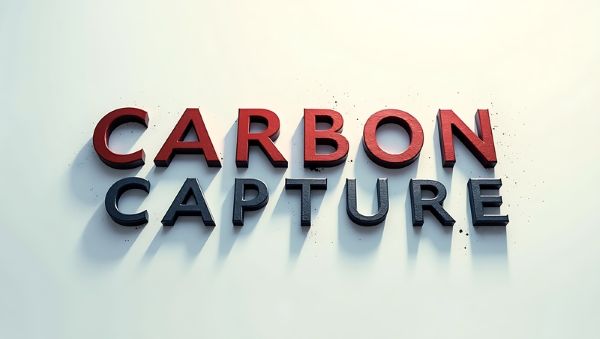When COP30 convenes this fall, it will demonstrate just how the fossil fuel industry has co-opted and weakened the purpose of this annual global meeting to combat climate change. At the COP29 meeting in Baku, Azerbaijan, over 1,700 fossil fuel lobbyists outnumbered the delegates who were there to focus on mitigating and adapting to global warming.
The COP30 meeting is in Belém, Brazil, where the purpose of the annual gathering will be restored to finding ways to reduce our global carbon footprint through technology, innovation and changing behaviour.
Missing in action at COP39 will be the United States under Donald Trump’s anti-climate and anti-science administration.
Also missing hopefully, will be most of the fossil fuel lobbyists who diminished COP29. To stop undue influence from the fossil fuel industry, COP30 has put new conflict-of-interest policies in place.
We have known for more than a century how chemistry influences climate determined by amounts of carbon dioxide (CO2), methane (CH4), water vapour (H2O), nitrous oxides (NO) and other greenhouse gasses (GHGs) in the atmosphere. The energy production that accompanied the mid-19th century Industrial Revolution introduced human-made GHGs into the mix, first in small increments, but later increasing in volume and at an accelerated rate. The atmosphere has responded by retaining more heat and is now contributing some of that to the global ocean. The seeds of the Industrial Revolution have spread to flourish on every continent except Antarctica. The unintended consequences of this spread are dire for our species and other life on Earth.
We began paying attention to the warming trend in the last few decades of the 20th century. Measures to contain the worst industrial emissions were enacted. We began to phase out the burning of the dirtiest fossil fuel, coal, in Global North countries. Burning coal in the Global South was the cheapest way to produce energy for emerging economies.
The environmental movement eventually caught on but enthusiasm for personal sacrifice was not picked up by the majority. In the absence of winning the hearts and minds of the majority through implementing market mechanisms such as pricing and carbon credits, our ability to stop global warming has failed.
Since changing lifestyles and the sacrifices entailed are not happening today, we seek inventions and technologies to find climate change solutions. Technology comes with a price.
The Rise of the Carbon Capture Industry
Rapid decarbonization is the purpose of the burgeoning carbon capture industry. Companies are looking at how to remove mainly CO2 from the air and water. The companies want to make it profitable. A new industry has been born, an offshoot of the energy and manufacturing industries. It is called Carbon Capture and Sequestration (CCS).
The Global CCS Institute (GCCSI) is a self-described international think tank and lobbyist for CCS. It has been at past COP meetings and will certainly be present at COP30.
Who does the GCCSI represent? To read the latest GCCSI report, access this link.
Currently, 74 CCS companies are developing or operating technologies to capture, transport and store CO2. Among them are fossil fuel and energy industry subsidiaries, power plant operators, and primary manufacturers of products like steel, aluminum and cement. The majority of deployed CCS technologies are add-ons to existing manufacturing plants. Other CCS operations include standalones that capture CO2 from ambient air.
What do CCS companies do with captured CO2? Some turn it into a feedstock for other industrial purposes. Some transport it by rail, truck or pipeline to be pumped into depleted oil and gas reservoirs or to be permanently stored in geologically stable underground rock formations like the Wallula Basalt Pilot Project in the state of Washington.
None of these CCS solutions comes cheap. Multiple millions of dollars have been invested. The result is that every ton of captured CO2 has a big price tag.
The Academic Pursuit of Accelerated Weathering
To invent cheaper solutions, universities are coming to the rescue, where academics are looking to mimic natural processes and use commonly found materials that have high adsorbent CO2 properties.
Researchers at the Lawrence Livermore National Laboratory in California in 2015 developed a low-cost, energy-efficient CO2 capture technology using baking-soda-containing microcapsules injected into flue gas to adsorb the gas molecules. Currently, a UK company, CDRMax, is mimicking the Lawrence Livermore research by using a patented solvent containing sodium bicarbonate to capture CO2 from the flue gasses emitted by manufacturing and thermal power plants.
More recently, Stanford University chemists have developed a method to pull CO2 from the air using common minerals, water and heat. The journal Nature, in February 2025, published an article describing their discovery involving common silicate minerals and water to capture CO2 while producing bicarbonate and solid carbonate minerals. This method is a sped-up version of natural weathering processes. The lead author of the Nature article, Matthew Kanan, Professor of Chemistry at the Stanford School of Humanities and Sciences, told the Stanford Report:
“The Earth has an inexhaustible supply of minerals that are capable of removing CO2 from the atmosphere, but they just don’t react fast enough on their own to counteract human greenhouse gas emissions. Our work solves this problem in a way that we think is uniquely scalable.”
Kanan’s team has drawn on techniques used by the cement industry to invent their CCS solution, which requires less than half the energy of current direct air capture (DAC) technologies to sequester CO2. In a quick test of the method, the researchers exposed calcium silicate and magnesium oxide to water and CO2 and, in two hours, produced carbonate minerals with the CO2 sequestered and locked inside.
A similar accelerated weathering approach has been taken by a team at Ben Gurion University in Israel, led by Avner Gross, a PhD. They call their material “magic dust.” It is a natural mixture of volcanic ash and desert dust that can serve multiple purposes.
Magic dust captures CO2 through accelerated mineral weathering. It also captures CO2 when used as plant feed. How so? When dusted on seaweed, it accelerates growth and when the seaweed dies and sinks to the sea bed the CO2 within it is sequestered. When fed to crops it enhances growth while sequestering CO2 in the soil.
Magic dust is nanoparticle in size and has a porous structure to give it a high CO2 adsorptive capacity. It is non-toxic, low-cost and easy to produce, and as described above, very versatile.
Other uses include combining it with building materials to make them CO2 adsorptive, or adding it to industrial processes with similar sequestering results. Magic dust can capture CO2 molecules to turn the gas into solid carbonates. It can be added to existing DAC systems to enhance their CO2 capture capacity.
These are promising academic results that are much needed if we hope to achieve net-zero and negative-zero for CO2 emissions by the end of the 21st century.








